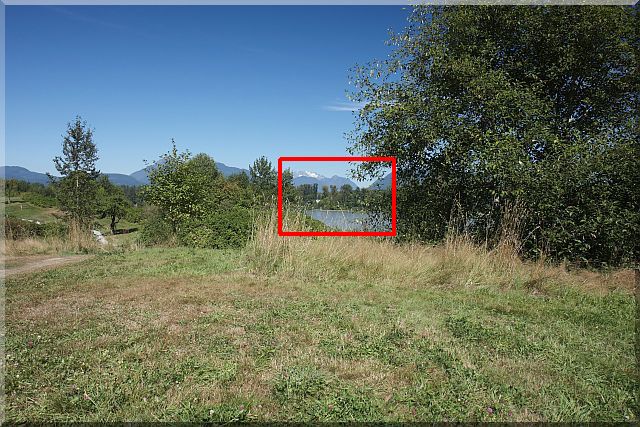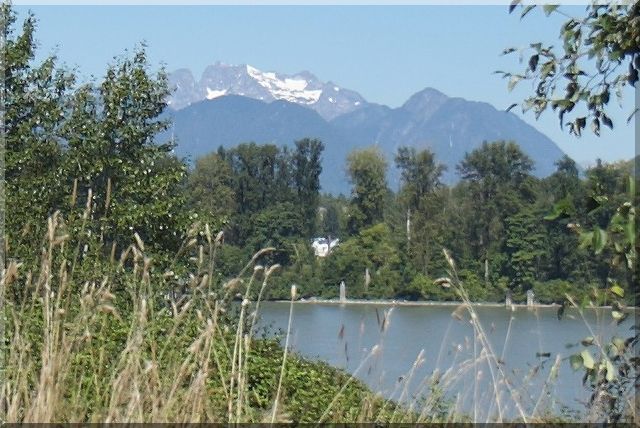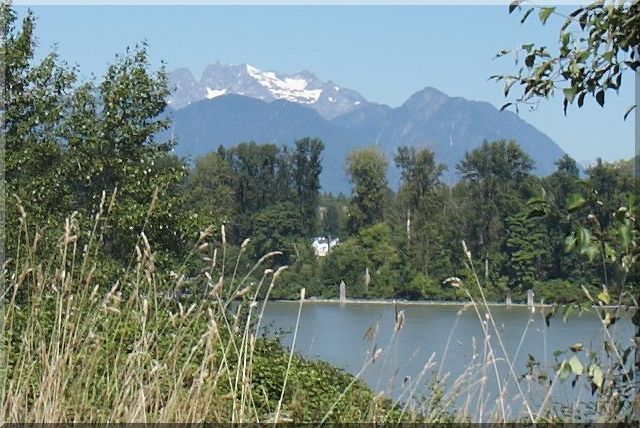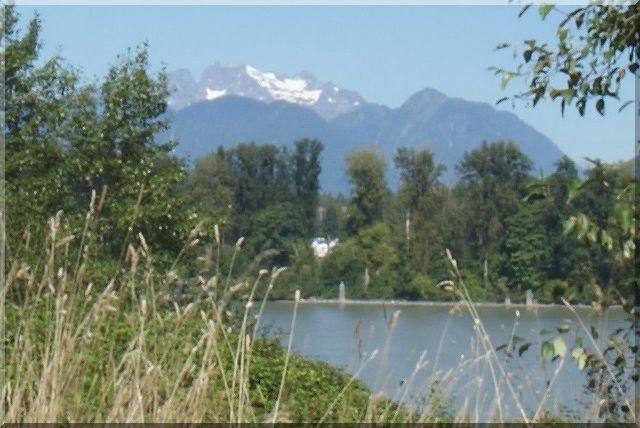Yesterday I spent few hours in a regional park closed to my home. This park has been my photography playground for a while: it has everything from the beautiful views over the Fraser Valley to the people that come here to enjoy the nature or simply to fish.
I took my camera and a tripod and walked along a short trail to reach a small hill that opens a nice view over the Fraser River and Garibaldi Ranges (part of the Coast Mountains). Here is the overview of the area:
While this photo was taken with the shortest focal distance available, the experiment was concentrated in the highlighted area. I took three shots from the same position but using three different apertures: F2.8, F5.6 and F22.
Let’s examine the results by looking closely at the area of interest in each of the three cases. The focus was set manually to infinity, i.e. to have the mountains clear. Which one looks the sharpest? (Hint: click on each photo for the best view)
The first one isn’t bad. Not the sharpest but not too far from very good. The second looks the best of all three; it is sharp and definitely pleasant. The last one is the worst; everything looks blurred despite the focus that was kept the same for all three.
In the last post I suggested that the smallest the aperture the smallest the hyperfocal distance is. Consequently, the largest the DOF should be with better chances to get a clear image. So, why for such a small aperture (F22) the result is so disappointing?
The explanation is an optical phenomenon called diffraction, usually not observed at large apertures where lenses are corrected at manufacturing. Obtaining a good lens is a difficult process (that’s why good lenses are so expensive). Most lens aberrations (that affect the quality of the image, including sharpness) are corrected for a reasonable interval of apertures. Once a lens is stopped down to where corrections aren’t working anymore, stopping down further will decrease sharpness in the plane of focus (where the photo sensor is).
Ignoring DOF for a moment, one question remains: why isn’t the first image the best one?
The answer is mostly the same: the larger the aperture (and the lens diameter) the more difficult is to keep the optical qualities under control. Despite of showing better in this example, the truth is that cheap lenses may have serious problems in preserving their optical quality when wide open. This is one of the reasons the cheap lenses are limited to relatively small apertures compared with their more expensive counterparts.
What is the usable aperture range for practical purposes? Ignoring the quality of the lens, we can say that F4 to F8 is a good bet for most of the cameras equipped with a variety of lenses. A really good lens will extend this interval to something like F2.8 to F11.
We can also define the optimal F number (or optimal aperture) where the two opposing factors – the aperture and the DOF – combine together for obtaining the best sharpness at the largest DOF possible. In many cases this is between F8 and F11. Some landscape photographers recommend F11 and probably we won’t be wrong with it. If you own a good camera with a very good lens, go for it! If not, F8 it will probably work for most anyways.
Are you using a fully automatic camera? Well, this discussion probably does not apply to you entirely. However, the influence of the aperture on the sharpness is a thing good to be understood. Most automatic cameras will try the optimal aperture first, especially when used in “Scenery” (i.e. landscape and similar) mode. Depending on the lighting conditions the camera may move away from it but not without trying everything else first. In other modes, the optimal aperture is probably less important. In a further post, I will try to explain what other factors are taken into consideration for these modes and how the automatic cameras “think” in different situations.
Phew! A long one… But I’m not done yet. In the next post we will look at DOF through examples. My experiment in the park was actually longer!




